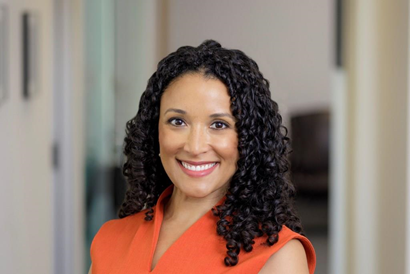5 Questions With...
2.24.2021
5 Questions With Rachel Robasciotti
In the ETF space, "impact investing" is easier said than done. Any issuer can use ESG rankings to screen out objectionable stocks. But real impact investing—that is, making a quantifiable difference with your dollars—often requires far more expertise and engagement resources than many providers are able or willing to devote.
That goes double for the burgeoning discipline of social justice investing, a catch-all term for the integration of racial, gender, economic and climate justice into investment portfolios.
Enter Rachel Robasciotti, one of the leading experts on social justice investing. Robasciotti is the founder and CEO of Adasina Social Capital, which launched the Adasina Social Justice All Cap Global ETF (JSTC) late last year. She also founded Robasciotti & Philipson, the successful San Francisco, CA-based RIA where the strategy underpinning JSTC was first developed.
In today's webinar, we'll talk shop with Robasciotti about the ins and outs of social justice investing, including how it differs from most other ESG approaches and what impact can really be achieved in an ETF vehicle.
Don't miss "ETF Storytellers: Rachel Robasciotti" today at 1 PM ET/12 PM CT. (*Please note the special time for our webcast this week!)
1. Racial equity, gender equality, climate justice, and other social justice movements have made a lot of headlines over the past year and change. But do they really have a quantifiable impact on an investment portfolio?
Yes! Adasina operates under the assumption that social movements give us early indicators of risk in the public markets. Generally, the things that society believes to be unethical eventually will become either illegal—as in, they'd no longer be investible—or that belief gets priced back into the securities.
Plus, these are our values and our clients' values, and they're the values that are becoming more and more popular in the marketplace. From a long-term investment perspective, taking them into consideration just makes sense.
2. Impact investing has never been more popular, but many investors remain confused over what it actually means—especially with the onslaught of "greenwashed" funds and strategies that are impact investments in name only. What should investors look for in an impact investment?
For us, impact investing means partnering with leaders in movements for gender, climate, economic and racial justice. We look to these social justice movement leaders to determine which issues we should be using to select companies for our portfolios, for example, or how to target corporate behavior on specific issues. As a result, not only are we advancing those movements for change, but it helps focus our efforts on what can make the most impact.
Let me give an example from the #MeToo movement: gender diversity in the workforce. Having more women on corporate boards is absolutely a good thing to focus on! Yet building portfolios entirely on that basis doesn't address that underlying issue, which is of serial sexual harassment. That's why we partnered with a social justice organization to develop a dataset that's open and free to the public about where every corporation stands on this issue. And we've built into our portfolio the first-ever sexual harassment screen, so that we can screen companies with policies that allow serial sexual harassers to thrive.
3. Many investment firms might argue that it's just too difficult to track those sorts of statistics with rigor. That's why they focus on boardroom diversity; it's a more easily obtainable statistic. How do you ensure that you're getting good data?
It's true; many investors often stop once they hit that data wall. So we organize to take it down, and to make sure that our data sources are open and accessible. It's not actually our intent to become data purveyors. In the end, we mostly ensure want to ensure that the social justice organizations are the owners of the data, and that the data can be used to organize other investors around the right issues.
Part of how we make an impact beyond our own portfolios is to ensure that, for example, Exxon is counted in that sexual harassment data set. Exxon wouldn't be in our portfolio anyway, because we screen out fossil fuel companies. But it still matters to know whether or not Exxon has policies in place that promote serial sexual harassment in the workforce, because then other investors can use that same data set, too—which we think is the key to having systemic impact, as in, across the whole system.
4. You offered this strategy for a long time in an SMA format. Why launch it as an ETF, too?
Lots of people—clients, other advisors—told us that they loved our approach, but they also loved having the relationship with their existing financial advisor. Or there were financial advisors who wanted access to what we were doing, as well. ETFs just made sense. They're so accessible! You can purchase them the same way you can purchase a stock.
The other benefit was that the ETF brought down the price point. In our SMA, we had a $1M minimum, because that's what it took to build out the portfolio. It's a large portfolio! But now, we can offer a much lower price point; we started off at $15/share.
5. What's something that most people don't know about you?
Under the age of 18, I had two different businesses shut down by the authorities for not being legal. One was a treehouse building business, while the other was a restaurant. I love making things; ETFs are just one of them. But apparently, we put together things that were so well-made that the authorities came in and said, "I'm sorry, you can't be selling these residential units to people."
Lara Crigger is the Editor-in-Chief of ETF Action. Contact her at lara@etfaction.com
Want to get this story and stories like it delivered right to your inbox?
Sign up to receive The Morning Focus newsletter.

